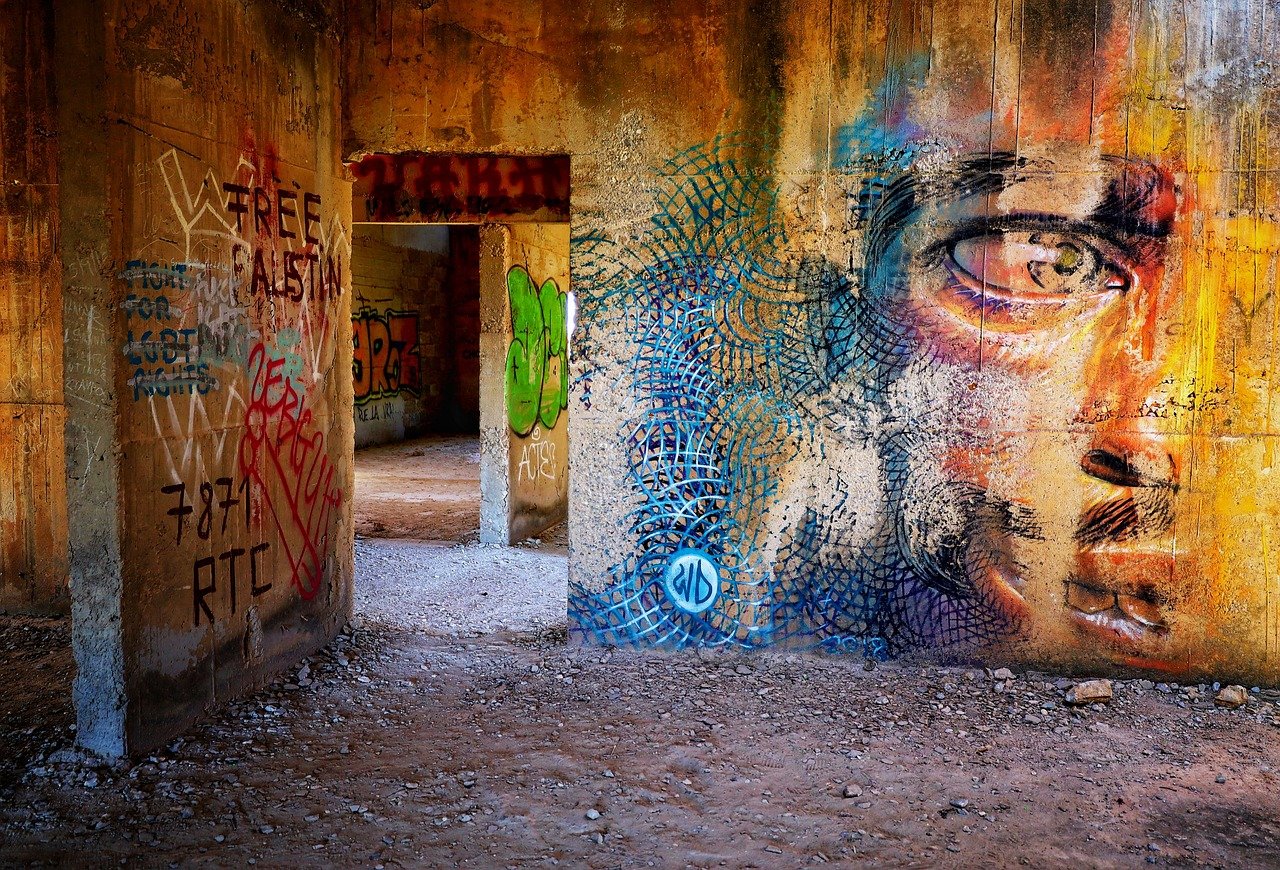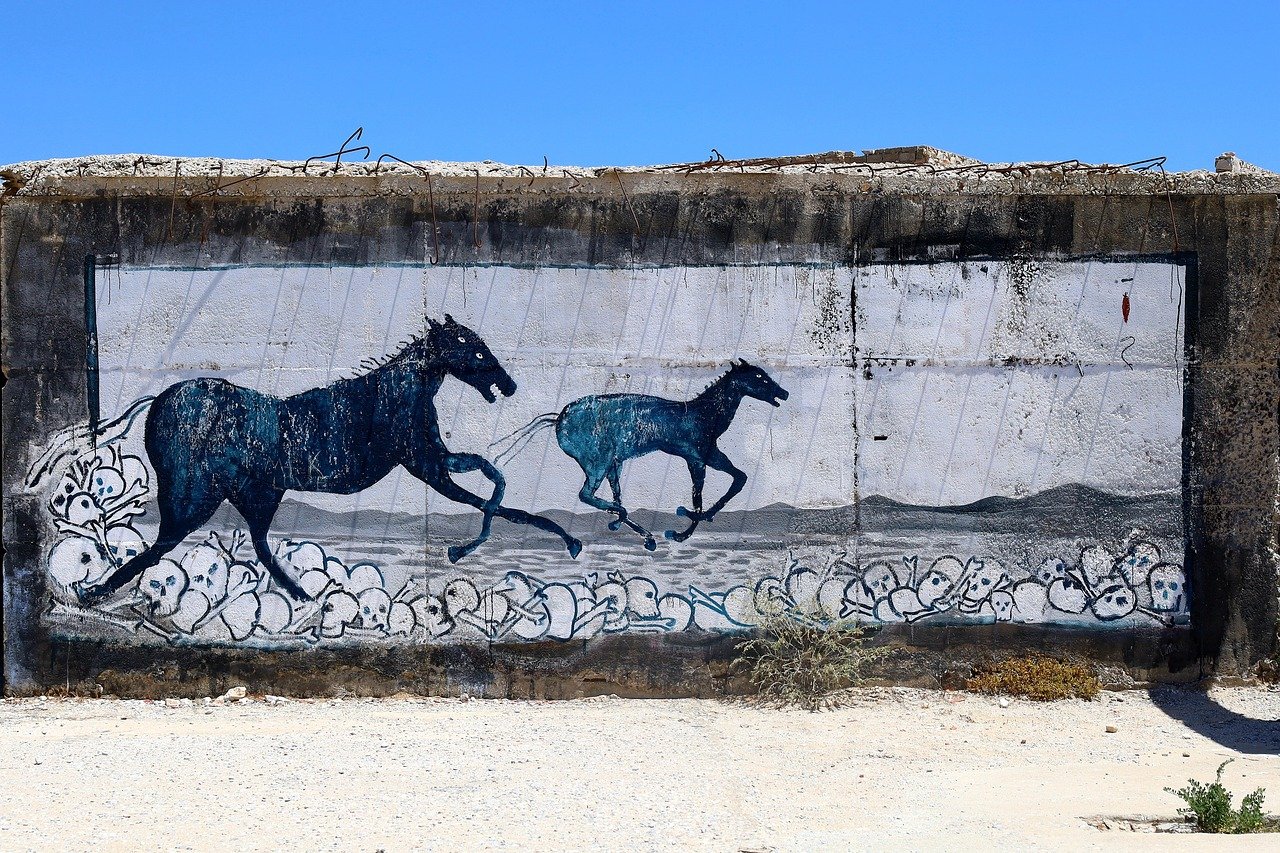The Evolution of Street Art
Street art has undergone a remarkable transformation from its humble beginnings as graffiti to its current status as a respected and influential art form. This evolution has not only changed the face of urban landscapes but has also challenged traditional notions of art, ownership, and public space.
Origins and Early Influences
The roots of modern street art can be traced back to the graffiti culture that emerged in New York City during the 1970s and 1980s. This period saw the rise of early pioneers who would lay the groundwork for future generations of street artists.
| Year | Artist/Event | Significance |
|---|---|---|
| 1967 | Cornbread | Considered the first modern graffiti artist |
| 1971 | TAKI 183 | Popularized the practice of “tagging” |
| 1978 | Keith Haring begins subway drawings | Bridged the gap between street art and fine art |
| 1980 | Jean-Michel Basquiat’s SAMO© project | Introduced conceptual art elements to street art |
| 1989 | “Subway Art” book published | Documented and spread New York graffiti culture globally |
Jean-Michel Basquiat and Keith Haring were instrumental in bridging the gap between street art and the traditional art world. Basquiat’s SAMO© project, which featured cryptic messages spray-painted around Lower Manhattan, caught the attention of the art establishment and helped launch his career as a neo-expressionist painter. Haring’s iconic figures, which he drew in New York City subway stations, became symbols of 1980s pop culture and activism.
Modern Acceptance
The transition of street art from vandalism to valued art form has been a gradual process, marked by increased public interest and institutional recognition. Today, street art is featured in major galleries, museums, and auction houses around the world.
Significant exhibitions that have contributed to this acceptance include:
- “Street Art” at Tate Modern, London (2008)
- “Art in the Streets” at MOCA, Los Angeles (2011)
- “Beyond the Streets” traveling exhibition (2018-present)
- “Banksy: Genius or Vandal?” unauthorized exhibitions worldwide
These exhibitions have not only showcased the work of street artists but have also helped to contextualize street art within the broader history of contemporary art. As a result, many street artists now straddle the worlds of public art and gallery exhibitions, creating works both on city streets and on canvas.
Legendary Street Artists

Banksy
Banksy, the enigmatic British artist, has become synonymous with street art, known for his satirical, politically charged stencil work. His rise to fame has been marked by audacious public stunts and a steadfast commitment to anonymity.
Some of Banksy’s most famous pieces include:
- “Girl with Balloon” (2002-2018)
- “Love is in the Bin” (2018) – The shredded version of “Girl with Balloon”
- “The Flower Thrower” (2003)
- “Napalm Girl” (2004-2005)
- “Mobile Lovers” (2014)
Banksy’s work often combines dark humor with social commentary, addressing issues such as war, consumerism, and political power. His ability to create thought-provoking images using simple stencil techniques has inspired countless imitators and helped to legitimize street art as a form of cultural expression.
Shepard Fairey
Shepard Fairey rose to prominence with his “Obey Giant” campaign, which began as a sticker art project featuring the face of wrestler André the Giant. This project evolved into a global phenomenon, spawning a clothing line and becoming a symbol of counterculture.
Fairey’s most significant contribution to popular culture came in 2008 with his creation of the “Hope” poster for Barack Obama’s presidential campaign. This iconic image, featuring a stylized portrait of Obama in red, white, and blue, became a symbol of political change and demonstrated the power of street art to influence public discourse.
Other notable works by Fairey include:
- “We the People” series (2017)
- “Make Art Not War” (2016)
- “Rise Above Rebel” (2012)
Fairey’s style, characterized by bold colors, graphic designs, and propagandistic imagery, has been influential in both street art and graphic design communities.
Invader
Invader, a French urban artist, has gained international recognition for his unique approach to street art. His work, inspired by 8-bit video games from the 1970s and 1980s, consists of mosaic tile installations that resemble pixelated characters from games like Space Invaders.
Invader’s “invasions” have taken place in over 65 cities across 33 countries. Each invasion is meticulously planned and documented, with the artist creating maps of his installations for fans to locate and photograph.
Key aspects of Invader’s work:
- Use of ceramic tiles to create durable, long-lasting installations
- Incorporation of local cultural elements into his designs
- Creation of a global treasure hunt through his “Flash Invaders” app
- Expansion into other mediums, including LED installations and QR code mosaics
Invader’s work has not only transformed urban spaces but has also created a unique form of interactive art that engages viewers both in physical spaces and through digital platforms.
Iconic Street Artworks and Murals
The Bowery Wall, New York City
The Bowery Wall in New York City has become one of the most famous street art locations in the world. Originally used by Keith Haring in 1982, the wall has since featured works by numerous prominent street artists, serving as a constantly evolving canvas that reflects the dynamism of street art culture.
Notable artists who have painted the Bowery Wall include:
- Os Gemeos (2009)
- Shepard Fairey (2010)
- JR (2015)
- Banksy (2018)
- Tristan Eaton (2019)
The wall’s prominence has made it a coveted space for artists and a must-see destination for street art enthusiasts. Its ever-changing nature embodies the ephemeral quality of street art while also serving as a barometer for current trends in urban art.
The Mural of the Revolution, Mexico City
Diego Rivera’s “Mural of the Revolution” in Mexico City stands as a monumental example of the power of public art to convey historical and cultural narratives. Completed in 1935, this massive fresco covers the walls of the National Palace and depicts the history of Mexico from the Aztec era to the Mexican Revolution.
Key features of the mural include:
- Depictions of pre-Columbian Mexican civilization
- Scenes from the Spanish conquest
- Portrayals of industrial workers and peasants
- Representations of key figures in Mexican history
While not street art in the contemporary sense, Rivera’s mural has been influential in demonstrating how large-scale public artworks can transform urban spaces and communicate complex social and political ideas.
The Mandela Mural, Johannesburg
The 60-foot mural of Nelson Mandela in Johannesburg, created by Shepard Fairey in 2014, serves as a powerful symbol of hope and unity in post-apartheid South Africa. Located in the Maboneng Precinct, an area known for its vibrant arts scene, the mural has become an iconic landmark in the city.
The mural’s impact extends beyond its visual appeal:
- It honors Mandela’s legacy and his role in South Africa’s transition to democracy
- It contributes to the revitalization of urban areas through public art
- It serves as a focal point for community engagement and tourism
- It demonstrates the global reach and influence of street art
This mural exemplifies how street art can serve as a powerful tool for commemorating historical figures and fostering a sense of national identity and pride.
The Cultural Impact of Street Art
Social Commentary and Activism
Street art has emerged as a potent medium for social commentary and activism, allowing artists to address pressing issues directly in public spaces. This form of artistic expression has the unique ability to reach a wide audience and provoke thought and discussion on important social and political topics.
Examples of street art as social commentary include:
- Banksy’s works on the Israeli West Bank barrier
- JR’s “Women Are Heroes” project, highlighting the dignity of women in developing countries
- Blu’s anti-capitalist murals in Berlin and elsewhere
- Icy and Sot’s pieces addressing human rights and environmental issues
These works demonstrate how street art can serve as a form of visual journalism, bringing attention to issues that might otherwise be overlooked or ignored by mainstream media.
Community Engagement
Street art has the power to transform neighborhoods, fostering community pride and engagement. By turning blank walls into vibrant canvases, street artists can revitalize urban areas and create a sense of place and identity.
Ways in which street art engages communities:
- Participatory mural projects that involve local residents
- Street art festivals that attract visitors and boost local economies
- Educational programs that teach art skills to youth
- Transformation of neglected spaces into open-air galleries
Projects like Philadelphia’s Mural Arts Program have shown how street art can be used as a tool for community development and social change, engaging residents in the creation of public art that reflects their experiences and aspirations.
The Intersection of Street Art and Technology
Digital Art and Virtual Reality
The advent of digital technologies has expanded the possibilities for street artists, allowing them to create works that merge physical and virtual realms. Augmented Reality (AR) and Virtual Reality (VR) technologies are being used to create interactive street art experiences that go beyond traditional static murals.
Examples of technology in street art:
- INSA’s “GIF-ITI” project, which creates animated murals viewable through a mobile app
- Aero’s VR street art gallery, allowing users to experience street art in virtual environments
- Eduardo Kobra’s use of QR codes to provide additional information about his murals
These technological innovations are not only creating new forms of street art but are also helping to preserve ephemeral works and make them accessible to a global audience.
Social Media and Global Reach
Social media platforms, particularly Instagram, have played a crucial role in the dissemination and popularization of street art. These platforms allow artists to document their work, build a following, and connect with audiences and collectors worldwide.
Impact of social media on street art:
- Increased visibility for emerging artists
- Real-time documentation of ephemeral works
- Creation of virtual communities around street art
- New avenues for commercialization and collaboration
The global reach provided by social media has helped to elevate street art from a local phenomenon to a global art movement, influencing trends and styles across borders.
Street art has evolved from its roots in graffiti culture to become a global phenomenon that challenges traditional notions of art and public space. The legendary artists who have shaped this movement have not only transformed urban landscapes but have also used their work to comment on social and political issues, engage communities, and push the boundaries of artistic expression. As technology continues to evolve, street art is likely to find new forms and reach even broader audiences, cementing its place as a vital and dynamic form of contemporary art.
